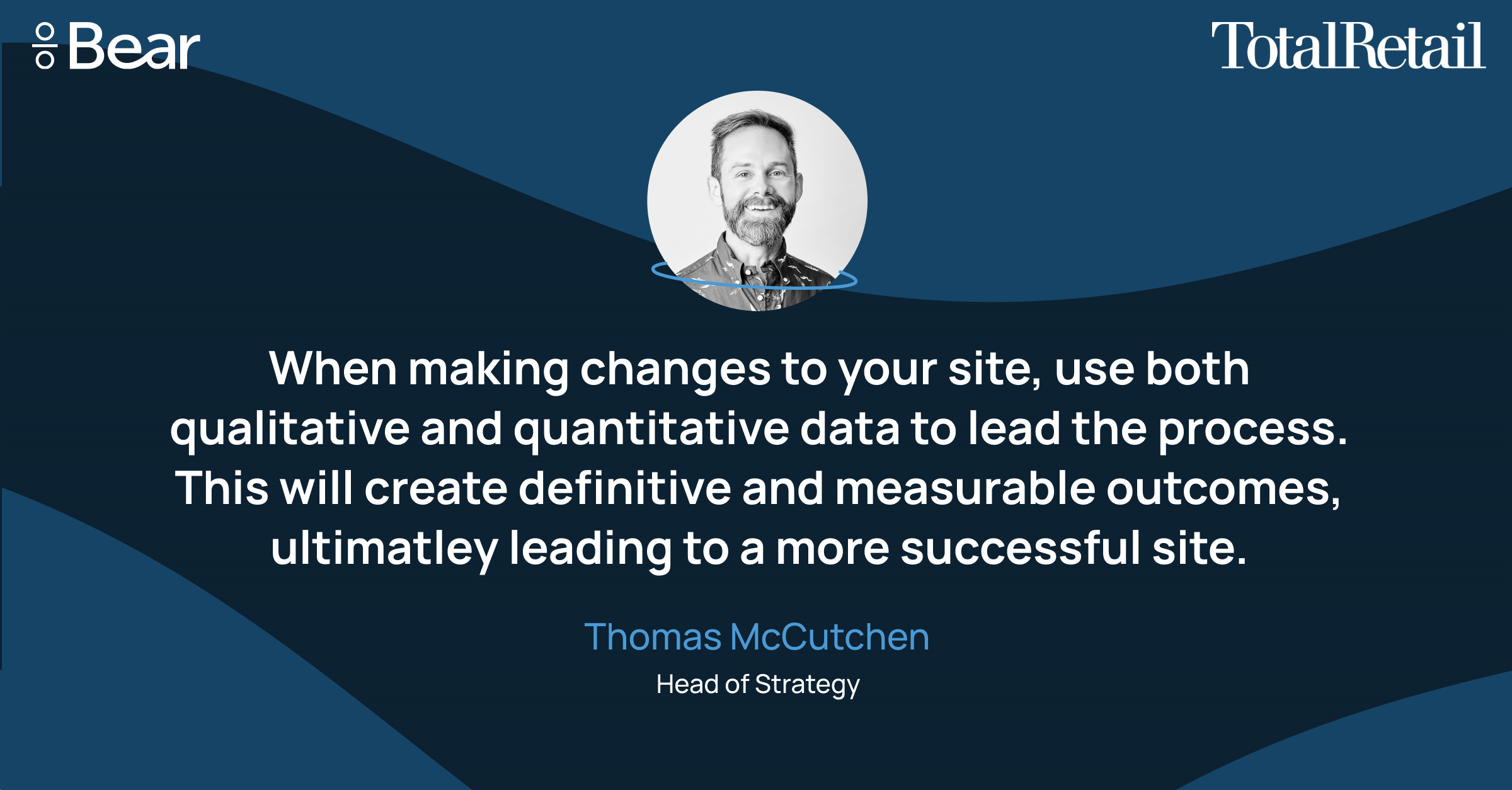Looking to make better use of your web and customer data to drive more eCommerce sales? From how to investigate data in every part of your sales funnel to personalization strategies that drive higher average order value, check out these proven tips and tricks for merchants.
This article was originally published on Total Retail, featuring our very own Head of Strategy, Thomas McCutchen.

Tips to Supercharge Your E-Commerce Strategy This Holiday Season
By Thomas McCutchen
As the excitement of Cyber Monday builds, are you properly leveraging data to maximize your online sales?
According to Bain & Company, the forecast for U.S. retail sales is a modest growth of 3 percent — the slowest since 2018. However, there’s a silver lining: online spending is predicted to soar by a robust 5 percent, propelled by Gen Z.
Yet, many e-commerce brands are still missing the opportunity to capitalize on growth due to an overreliance on gut feelings and personal preferences when making critical web decisions. Instead, a shift to data-driven strategies can be a game changer.
If you’re looking to make better use of your website and customer data, here’s where to start.
Overlooked Areas That Can Make a Big Impact
Decision fatigue is a real concern for many consumers, especially during the rapid-fire holiday season where gift lists are long and multiple sites have the same items. Any issue can immediately turn a shopper off.
To truly address challenges, take the time to investigate your Google Analytics (GA) data in every part of your sales funnel. Conversion rate and revenue per session are crucial metrics, but the real power lies in breaking them down across specific areas of your site. Each part of the funnel matters, so where is the real breakdown happening? You must examine your conversion rate and other stats separately on multiple critical pages — from the landing experience to the add-to-cart experience to checkout — to figure out where the issue in the funnel is happening.
Traditional GA metrics are a great start to see smoke, but don’t always lead to the fire. To tell the full picture, consider utilizing tools like heatmaps to complete the story of buyer friction, and pinpoint the area in need of improvement.
Data will help guide user experience decisions. A simple example is the accordion. The accordion is often used to aggregate information to make a page less busy; however, not all site visitors understand this rather simple UI element. We found that when we expanded the first accordion in the list, the visitor understood more about this feature, interacted with it more, and it ultimately led to a 9 percent increase in conversion.
The Power of Personalization
Another common challenge for e-commerce merchants is personalizing the customer experience. Personalization is a wide topic and often intimidating. To keep this more approachable, prioritize your recommended products — and go beyond simply recommending products of the same category. This approach only presents an alternative to the current product. It’s also fruitful to consider what's complementary to the product or what pairs well with it. Even better, using an app like Rebuy you can surface products that are statistically most often purchased together with that product. This provides the visitor with more relevant content, improving the user experience while building trust and ultimately driving a higher average order value.
To help illustrate this point within fashion e-commerce, if a visitor is viewing a pants product page, do not show a random listing of more pants as an alternative. Use an app to show alternative pants that were purchased instead of the pants the shopper is reviewing (Amazon.com does this well). Also consider adding another category complementary to the product being viewed, such as relevant shirts, jackets or shoes that could be paired with the pants. This content should once again be powered with intelligence within an app.
Your web data should shape your e-commerce strategy, drive personalization, improve sales, and provide a better customer experience. By making sure your choices are backed by data instead of gut feelings, you can better position your business for success.
Thomas McCutchen is head of strategy at Bear Group, a website development agency specializing in custom CMS and e-commerce builds, integrations, and post-launch support.